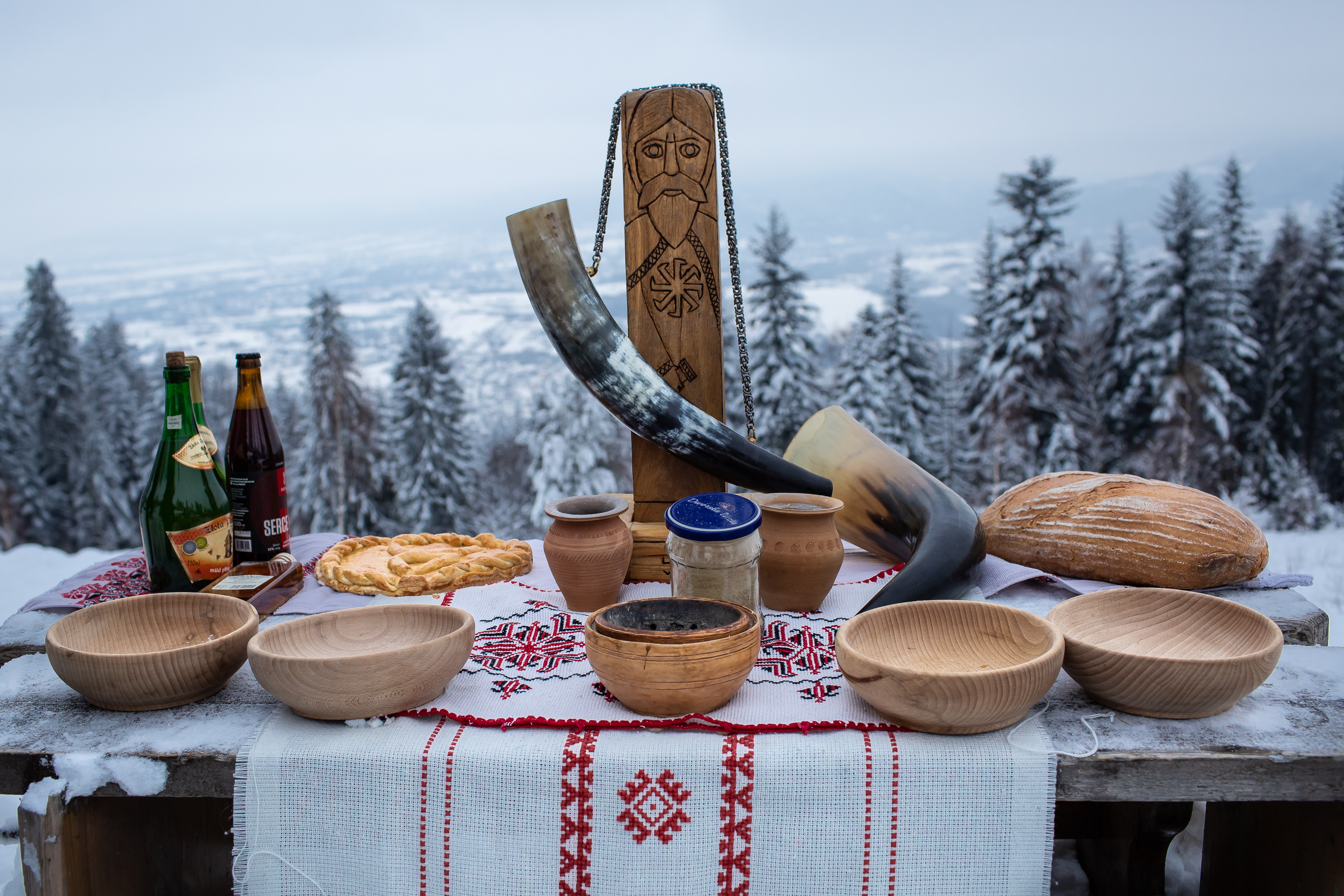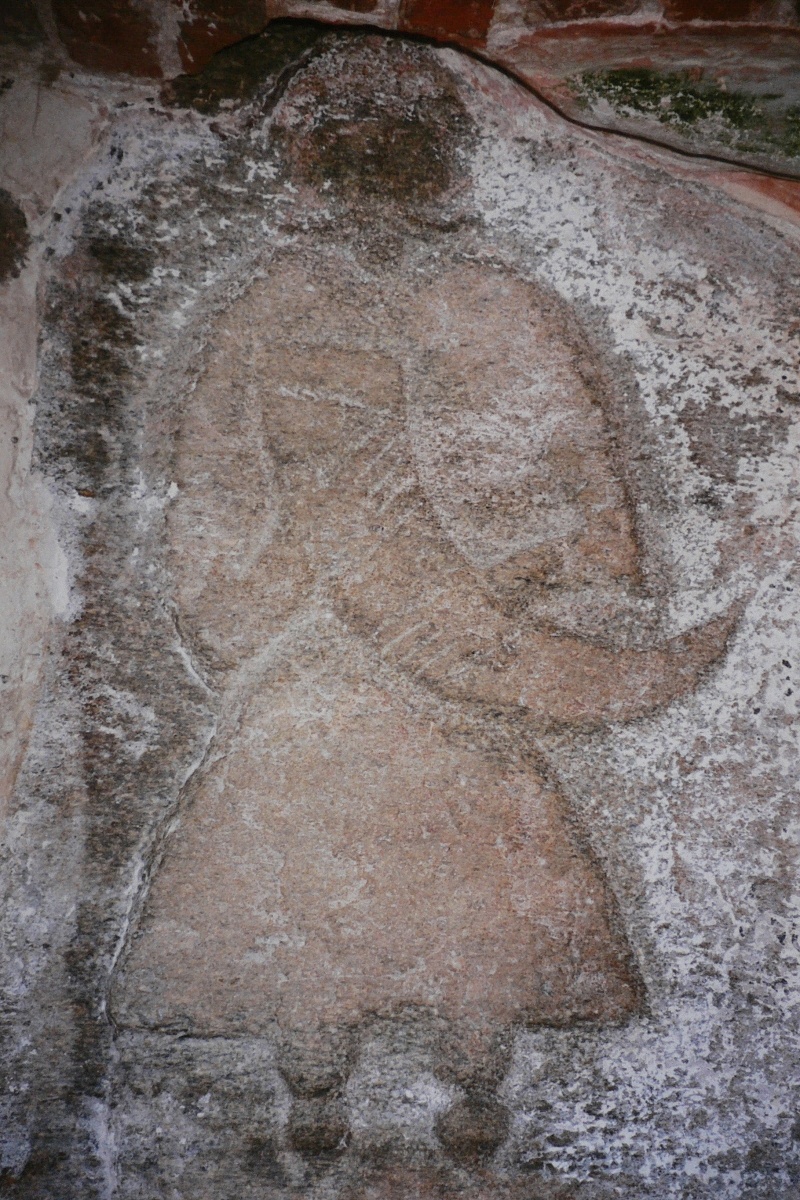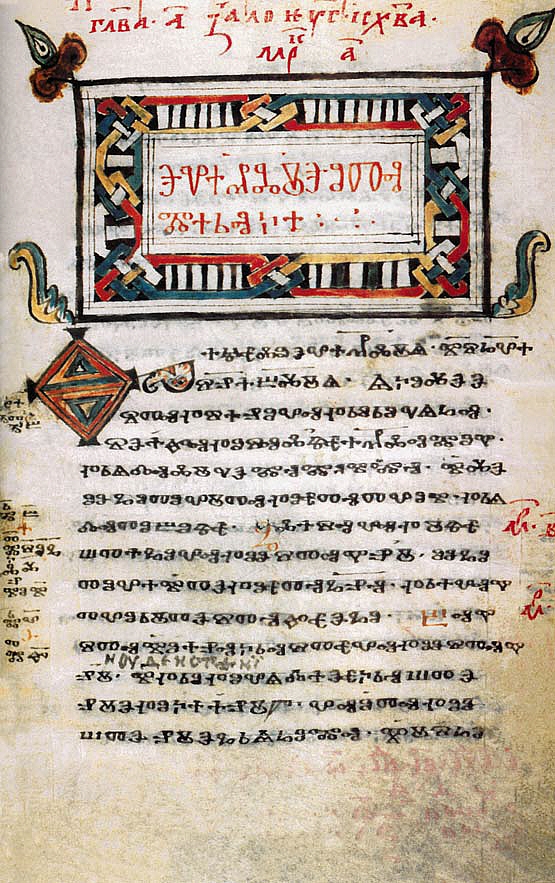|
Dazhdbog
Dazhbog (), alternatively Daždźboh (), Dazhboh (), Dažbog, Dazhdbog, Dajbog, Daybog, Dabog, Dazibogu, or Dadźbóg, was one of the major gods of Slavic mythology, most likely a solar deity and possibly a cultural hero. He is one of several authentic Slavic gods, mentioned by a number of medieval manuscripts, and one of the few Slavic gods for which evidence of worship can be found in all Slavic tribes. Dazhbog (or Dazhboh) is mentioned in the ''Primary Chronicle'', a history of early Kievan Rus' as one of seven gods whose statues Prince Vladimir the Great erected in front of his palace in Kiev in 980, when he came to the throne. The name is also mentioned in the Hypatian Codex, as well as in the medieval Old East Slavic epic ''The Tale of Igor's Campaign .'' Etymology The Proto-Slavic reconstruction is *dadjьbogъ,Олег Трубачёв (ред.) (1974–), Этимологический словарь славянских языков, Москва: Наука, volum ... [...More Info...] [...Related Items...] OR: [Wikipedia] [Google] [Baidu] |
Slavic Mythology
Slavic paganism, Slavic mythology, or Slavic religion refer to the Religion, religious beliefs, myths, and ritual practices of the Slavs before Christianisation of the Slavs, Christianisation, which occurred at various stages between the 8th and the 13th century. The South Slavs, who likely settled in the Balkans during the 6th–7th centuries AD, bordering with the Byzantine Empire to the south, came under the sphere of influence of Eastern Christianity relatively early, beginning with the creation of writing systems for Slavic languages (first Glagolitic, and then Cyrillic script) in 855 by the brothers Saints Cyril and Methodius and the adoption of Christianity in First Bulgarian Empire, Bulgaria in 864 and 863 in Great Moravia. The East Slavs followed with the official adoption in 988 by Vladimir the Great of Kievan Rus'. The process of Christianising the West Slavs was more gradual and complicated compared to their eastern counterparts. The Moravians accepted Christianity a ... [...More Info...] [...Related Items...] OR: [Wikipedia] [Google] [Baidu] |
Szczodre Gody MIR 1
Szczodre (1945-1948: Sybilin, ) is a village in the administrative district of Gmina Długołęka, within Wrocław County, Lower Silesian Voivodeship, in south-western Poland. Geography The settlement is located within the Silesian Lowlands, approximately north of Długołęka, and north-east of the regional capital Wrocław. History In the 10th century Mieszko I of Poland of the Piast dynasty included these areas into newly formed Poland. Following Poland's fragmentation, it was located in the Duchy of Silesia. The village in the Duchy of Silesia was first mentioned as ''Palici'' in a 1245 deed. From 1315 it was the seat of the Rastelwitz noble family, and in 1327 it passed to the Crown of Bohemia (Czechia). It was completely destroyed in 1643 during the Thirty Years' War. In the 18th century it was annexed by Prussia, and from 1871 to 1945 it was also part of Germany. The Prittwitz family had the locality of ''Neudorf'' rebuilt, which in 1685 was acquired by Christian Ulri ... [...More Info...] [...Related Items...] OR: [Wikipedia] [Google] [Baidu] |
Rus' People
The Rus, also known as Russes, were a people in early medieval Eastern Europe. The scholarly consensus holds that they were originally Norsemen, mainly originating from present-day Sweden, who settled and ruled along the river-routes between the Baltic and the Black Seas from around the 8th to 11th centuries AD. The two original centres of the Rus' were Ladoga (''Aldeigja''), founded in the mid-8th century, and Rurikovo Gorodische (''Holmr''), founded in the mid-9th century. The two settlements were situated at opposite ends of the Volkhov River, between Lake Ilmen and Lake Ladoga, and the Norsemen likely called this territory ''Gardar''. From there, the name of the Rus' was transferred to the Middle Dnieper, and the Rus' then moved eastward to where the Finnic tribes lived and southward to where the Slavs lived. The name '' Garðaríki'' was applied to the newly formed state of Kievan Rus', and the ruling Norsemen along with local Finnic tribes gradually assimilated in ... [...More Info...] [...Related Items...] OR: [Wikipedia] [Google] [Baidu] |
Helios
In ancient Greek religion and Greek mythology, mythology, Helios (; ; Homeric Greek: ) is the god who personification, personifies the Sun. His name is also Latinized as Helius, and he is often given the epithets Hyperion ("the one above") and Phaethon ("the shining"). Helios is often depicted in art with a radiant crown and driving a horse-drawn chariot through the sky. He was a guardian of oaths and also the god of sight. Though Helios was a relatively minor deity in Classical Greece, his worship grew more prominent in late antiquity thanks to his identification with several major solar divinities of the Roman period, particularly Apollo and Sol (Roman mythology), Sol. The Roman Emperor Julian (emperor), Julian made Helios the central divinity of his short-lived revival of Religion in ancient Rome, traditional Roman religious practices in the 4th century AD. Helios figures prominently in several works of Greek mythology, poetry, and literature, in which he is often described ... [...More Info...] [...Related Items...] OR: [Wikipedia] [Google] [Baidu] |
Egyptians
Egyptians (, ; , ; ) are an ethnic group native to the Nile, Nile Valley in Egypt. Egyptian identity is closely tied to Geography of Egypt, geography. The population is concentrated in the Nile Valley, a small strip of cultivable land stretching from the Cataracts of the Nile, First Cataract to the Mediterranean Basin, Mediterranean and enclosed by desert both to the Eastern Desert, east and to the Western Desert (North Africa), west. This unique geography has been the basis of the DNA history of Egypt, development of Egyptian society since Ancient Egypt, antiquity. The daily language of the Egyptians is a continuum of the local variety of Arabic, varieties of Arabic; the most famous dialect is known as Egyptian Arabic or ''Masri''. Additionally, a sizable minority of Egyptians living in Upper Egypt speak Sa'idi Arabic. Egyptians are predominantly adherents of Sunni Islam with a small Shia minority and a significant proportion who follow native Sufi tariqah, orders.Hoffman, Val ... [...More Info...] [...Related Items...] OR: [Wikipedia] [Google] [Baidu] |
Hephaestus
Hephaestus ( , ; wikt:Hephaestus#Alternative forms, eight spellings; ) is the Greek god of artisans, blacksmiths, carpenters, craftsmen, fire, metallurgy, metalworking, sculpture and volcanoes.Walter Burkert, ''Greek Religion'' 1985: III.2.ii; see coverage of Lemnos-based traditions and legends at Lemnos, Mythic Lemnos In Greek mythology, Hephaestus was the son of Hera, either on her own or by her husband Zeus. He was cast off Mount Olympus by his mother Hera because of his lameness, the result of a congenital impairment; or in another account, by Zeus for protecting Hera from his advances (in which case his lameness would have been the result of his fall rather than the reason for it). As a smithing god, Hephaestus made all the weapons of the gods in Olympus. He served as the blacksmith of the gods, and was worshipped in the manufacturing and industrial centres of Greece, particularly Athens. The cult of Hephaestus was based in Lemnos. Hephaestus's symbols are a smith's ham ... [...More Info...] [...Related Items...] OR: [Wikipedia] [Google] [Baidu] |
Ipatiev Monastery
The Ipatiev Monastery (; also Ipatievsky Monastery), sometimes translated into English as Hypatian Monastery, is a male monastery situated on the bank of the Kostroma River just opposite the city of Kostroma. It was founded around 1330 by a Tatar convert, Prince Chet, whose male-line descendants included Solomonia Saburova and Tsar Boris Godunov, and is dedicated to St. Hypatios of Gangra. History Foundation The main theory considers Tatar Murza Chet, baptized as Zachary, to be the founder of the Ipatievsky Monastery. The legend says that he was miraculously cured from a disease by a vision of the Virgin Mary and St. Philip and St. Hypatius, and decided to build the monastery as a sign of gratitude. Some historians state that the monastery was founded in 1275 by Yaroslavich, but declined together with the Kostroma Principality after his death. In this case, the monastery could be not entirely built but only revived by Murza Chet. 13th–15th centuries In 1435, Va ... [...More Info...] [...Related Items...] OR: [Wikipedia] [Google] [Baidu] |
Serbo-Croatian
Serbo-Croatian ( / ), also known as Bosnian-Croatian-Montenegrin-Serbian (BCMS), is a South Slavic language and the primary language of Serbia, Croatia, Bosnia and Herzegovina, and Montenegro. It is a pluricentric language with four mutually intelligible Standard language, standard varieties, namely Serbian language, Serbian, Croatian language, Croatian, Bosnian language, Bosnian, and Montenegrin language, Montenegrin. South Slavic languages historically formed a dialect continuum. The region's turbulent history, particularly due to the expansion of the Ottoman Empire, led to a complex dialectal and religious mosaic. Due to population migrations, Shtokavian became the most widespread supradialect in the western Balkans, encroaching westward into the area previously dominated by Chakavian and Kajkavian. Bosniaks, Croats, and Serbs differ in religion and were historically often part of different cultural spheres, although large portions of these populations lived side by side und ... [...More Info...] [...Related Items...] OR: [Wikipedia] [Google] [Baidu] |
Ukrainian Language
Ukrainian (, ) is an East Slavic languages, East Slavic language, spoken primarily in Ukraine. It is the first language, first (native) language of a large majority of Ukrainians. Written Ukrainian uses the Ukrainian alphabet, a variant of the Cyrillic script. The standard language is studied by the National Academy of Sciences of Ukraine and Potebnia Institute of Linguistics. Comparisons are often made between Ukrainian and Russian language, Russian, another East Slavic language, yet there is more mutual intelligibility with Belarusian language, Belarusian,Alexander M. Schenker. 1993. "Proto-Slavonic", ''The Slavonic Languages''. (Routledge). pp. 60–121. p. 60: "[The] distinction between dialect and language being blurred, there can be no unanimity on this issue in all instances..."C.F. Voegelin and F.M. Voegelin. 1977. ''Classification and Index of the World's Languages'' (Elsevier). p. 311, "In terms of immediate mutual intelligibility, the East Slavic zone is a sin ... [...More Info...] [...Related Items...] OR: [Wikipedia] [Google] [Baidu] |
Bulgarian Language
Bulgarian (; , ) is an Eastern South Slavic, Eastern South Slavic language spoken in Southeast Europe, primarily in Bulgaria. It is the language of the Bulgarians. Along with the closely related Macedonian language (collectively forming the East South Slavic languages), it is a member of the Balkan sprachbund and South Slavic languages, South Slavic dialect continuum of the Indo-European language family. The two languages have several characteristics that set them apart from all other Slavic languages, including the elimination of grammatical case, case declension, the development of a suffixed definite article, and the lack of a verb infinitive. They retain and have further developed the Proto-Slavic language, Proto-Slavic verb system (albeit analytically). One such major development is the innovation of evidentiality, evidential verb forms to encode for the source of information: witnessed, inferred, or reported. It is the official Languages of Bulgaria, language of Bulgar ... [...More Info...] [...Related Items...] OR: [Wikipedia] [Google] [Baidu] |
Old East Slavic
Old East Slavic (traditionally also Old Russian) was a language (or a group of dialects) used by the East Slavs from the 7th or 8th century to the 13th or 14th century, until it diverged into the Russian language, Russian and Ruthenian language, Ruthenian languages. Ruthenian eventually evolved into the Belarusian language, Belarusian, Rusyn language, Rusyn, and Ukrainian language, Ukrainian languages. Terminology The term ''Old East Slavic'' is used in reference to the modern family of East Slavic languages. However, it is not universally applied. The language is also traditionally known as ''Old Russian''; however, the term may be viewed as anachronistic, because the initial stages of the language which it denotes predate the dialectal divisions marking the nascent distinction between modern East Slavic languages, therefore a number of authors have proposed using ''Old East Slavic'' (or ''Common East Slavic'') as a more appropriate term. ''Old Russian'' is also used to descr ... [...More Info...] [...Related Items...] OR: [Wikipedia] [Google] [Baidu] |
Church Slavonic Language
Church Slavonic is the conservative Slavic liturgical language used by the Eastern Orthodox Church in Belarus, Bulgaria, North Macedonia, Montenegro, Poland, Russia, Ukraine, Serbia, the Czech Republic and Slovakia, Slovenia and Croatia. The language appears also in the services of the Russian Orthodox Church Outside of Russia, the American Carpatho-Russian Orthodox Diocese, and occasionally in the services of the Orthodox Church in America. In addition, Church Slavonic is used by some churches which consider themselves Orthodox but are not in communion with the Orthodox Church, such as the Montenegrin Orthodox Church and the Russian True Orthodox Church. The Russian Old Believers and the Co-Believers also use Church Slavonic. Church Slavonic is also used by Greek Catholic Churches in Slavic countries, for example the Croatian, Slovak and Ruthenian Greek Catholics, as well as by the Roman Catholic Church (Croatian and Czech recensions). In the past, Church Slavon ... [...More Info...] [...Related Items...] OR: [Wikipedia] [Google] [Baidu] |










